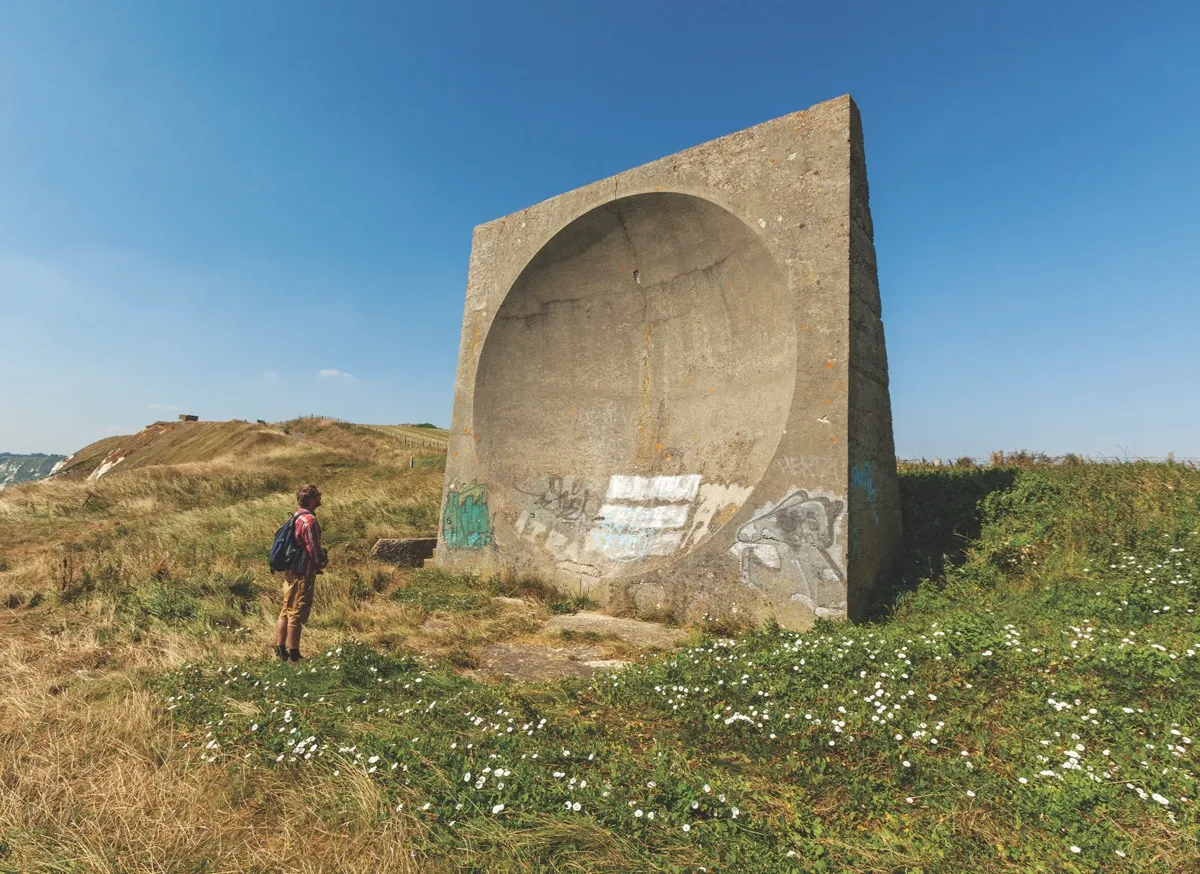During the Second World War, Dover was quite a different place from the busy, international port of today. As Britain’s front line, the whole area was heavily militarised, ready to take on a Nazi invasion. As the conflict escalated, castles were refortified, Napoleonic forts were reopened and concrete batteries, gun emplacements and pill boxes sprang up across the cliffs.
Today, ruins of these fortifications are slowly being reclaimed by plant life as the natural world heals the scars left from this brutal war. Now the impoverished chalk grassland is home to a rich tapestry of wildflowers supporting thriving populations of insect and bird life. Keen foragers will find sloes, the last of the apples and even edible leaves at this time of year. The reds, oranges and yellows of the turning trees contrast beautifully with the towering white cliffs and deep blue sea. The long history of this coastline, its stunning natural beauty and the strong sea winds all conspire to take your breath away during this delightful autumnal walk.
THE FATE OF THE FEW
The walk begins at the Battle of Britain Memorial. Here, the names of ‘The Few’, the Allied airmen who fought in the Battle of Britain, are engraved in rows behind the statue of an airman sitting calmly looking out to sea. It is as if the pilot is sat in a rare moment of peace before joining the chaos of battle. Head over to the north-east corner of the memorial in the direction of Dover, where the North Downs Way footpath follows the cliffs.

FROM ON HIGH
Spectacular, vertiginous views along the cliff top down to Warren Country Park set the scene for the walk and set the legs of the faint-hearted wobbling. Continue along the path behind the Cliff Top Café as it snakes past the back of gardens
and the caravan park.
ODD STRUCTURES
After the caravan park, a turn off leads up to the Royal Oak (the last place for a pint before Dover). Continue on until the path splits in front of a large white house. You can take either path, as both converge at an odd-looking fortification with a chunk cut out of the middle.

MIRROR, MIRROR
From the fortification you will see the enormous sound mirror constructed in the 1920s as a pre-radar warning system. Acting like a gigantic outer ear, it could detect the noise of enemy aircraft long before the human ear could. But the mirrors were rendered obsolete soon after completion. As technology advanced, ever-quicker enemy planes could be buzzing overhead by the time the alarm was raised. Follow the path as it rises up, taking time to enjoy the views behind you. \

SOUND OF GUNS
Continue on this path past a ventilation tower and the elongated ruin of a rifle range. Further on from the range are the scattered remains of Hougham Battery, built in 1941 and once equipped with three large naval guns. The coastal look-out posts are still visible, although nature does seem to be doing her best to
bury this part of our past.

A THORNY PATH
The road gets noisy during this next section but the undulating cliff tops and seabirds nosediving off the cliff should be enough to distract you from the traffic. Walk up over the headland of Shakespeare’s Cliff and down through thickets of blackthorn.
ANCIENT FOOTINGS
The next section takes you under the A20, zig-zagging through the estate past the ancient foundations of the Knights Templar Church and to the hidden gem of Drop Redoubt Fort. Ingeniously
dug into the landscape, the fort is a truly awesome piece of human engineering. Built during the threat of a Napoleonic invasion, it was also put to use in the Second World War. Commandos here were tasked with blowing up Dover Harbour should the Germans ever invade.
As you rejoin the North Downs Way, you catch magnificent views of Dover Castle before descending into the town via steep steps.
CLIFFSIDE PINT
Once in Dover you can choose to end your walk or continue along spectacular National Trust coastline to one of the many pubs in the quaint village of St Margaret’s at Cliffe for a well-deserved drink.
Dave Hamilton
is a writer with a keen interest in history, nature and adventure.
Photos: Sarah Medway

